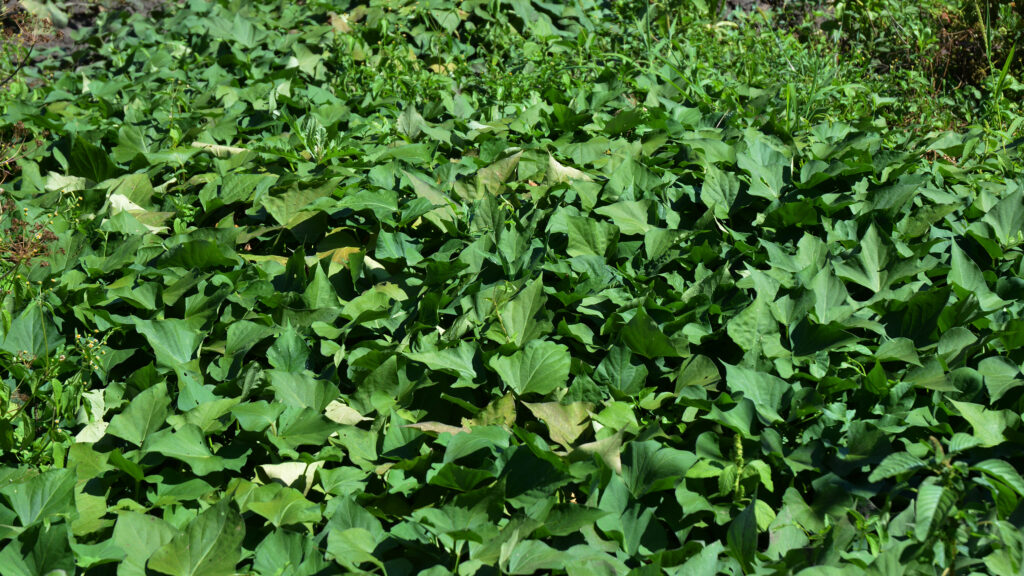
Jicama, a root vegetable native to Central and South America, is known for its crisp texture and mild, sweet flavor, often compared to apples or water chestnuts. This plant is part of the legume family and grows as a vine with edible underground tubers. The seeds and pods contain naturally occurring toxins and should not be consumed. The plant thrives in warm climates and is commonly cultivated in tropical and subtropical regions. Jicama seeds are available in different variants and are suitable for various climates and gardening needs.
Different Types of Jicama Seeds
Jicama plants offer several seed variants, each with unique growing requirements. Here’s a list of all the different types of Jicama seeds.
- Mexican Jicama
- Pachyrhizus Erosus
- Amazonian Jicama
- Blue Jicama
- Baja Jicama
- Indian Jicama
Where to Buy Jicama Seeds
When buying jicama seeds, selecting reputable sellers for quality and successful germination is essential. Below are our recommended US-based sellers.
- True Leaf Market: Offers a wide variety of high-quality seeds, including Jicama.
- Everwilde Farms: Specializes in heirloom and unique seed varieties that are sustainably sourced.
- Sow Right Seeds: Known for diverse selection and reliable seed quality, ideal for indoor and outdoor growing.
- Home Grown Seeds: Provides a comprehensive range of vegetable seeds with high germination rates.
- Survival Garden Seeds: Offers resilient seeds designed for robust growth even in challenging conditions.
- Gardeners Basics: Supplies essential gardening seeds with detailed planting instructions.
- Burpee: A trusted name in gardening with a guarantee of germination and plant health.
Benefits of Growing Jicama
Growing Jicama can benefit home gardeners, enhancing garden health and culinary possibilities.
- Thrives in warm climates
- Enhances garden biodiversity
- Provides nutritious tubers
- Requires minimal maintenance
- Can improve soil quality
- Long storage life after harvest
- Attracts beneficial insects
- Suitable for crop rotation
- Resistant to many pests
- Versatile in culinary uses
Health Benefits of Jicama
Jicama is packed with nutrients that support health and wellness, making it a valuable addition to a balanced diet.
- High in dietary fiber
- Rich in vitamin C
- Low in calories
- Contains antioxidants
- Supports digestion
- Helps manage blood sugar levels
- Boosts immune function
- Promotes heart health
- Contains anti-inflammatory properties
- Supports weight management
How to Grow Jicama Seeds Indoors
Each variant of Jicama seeds may have specific growing instructions. The recommended sellers provide comprehensive guidelines with their seeds. Here are general steps for starting Jicama seeds indoors and later transferring them outdoors.
- Choose a Suitable Container: Start with small pots that allow for drainage.
- Prepare Soil: Use a well-draining potting mix with organic compost.
- Sow the Seeds: Plant seeds about ½ inch deep and cover lightly with soil.
- Water Regularly: Keep the soil moist but not soaked.
- Provide Light: Place containers near a window or use grow lights.
- Maintain Warm Temperature: Ideal indoor temperature is around 70°F.
- Transplant Carefully: After about 6-8 weeks, transfer seedlings outside.
- Prepare Outdoor Garden: Choose a sunny spot with loose, well-draining soil.
- Acclimate Plants: Gradually expose seedlings to outdoor conditions.
- Plant in Garden Bed: Space plants 12-15 inches apart for optimal growth.
How to Grow Jicama Seeds Outdoors
Jicama grows best outdoors, where it can access ample sunlight and space. Variants may require specific adjustments, which the recommended sellers include with their products. Here are general guidelines for growing Jicama outdoors.
- Choose a Sunny Spot: Select a location with full sun.
- Prepare the Soil: Add compost to create well-draining, fertile soil.
- Plant Seeds Directly: Sow seeds about ½ inch deep in garden soil.
- Water Consistently: Ensure soil stays moist, especially during germination.
- Apply Mulch: Retain moisture and control weed growth around plants.
- Thin Seedlings: Space plants 12-15 inches apart once they start growing.
- Fertilize Regularly: Use a balanced fertilizer during the growing season.
- Monitor for Pests: Implement natural pest control if needed.
- Support Vines: Use stakes or trellises for better vine growth.
- Harvest Tubers: Dig up roots when they reach a good size, typically after 5-6 months.
About Worldly Seeds
Worldly Seeds originally began as a seed retailer, but we later transitioned our focus to sharing our knowledge with others. While we no longer sell seeds, we guide people on how to start a seed store business and provide valuable information on sourcing and growing seeds. After generating nearly $250,000 in part-time revenue from selling garden seeds, we realized our calling was in teaching and empowering others to achieve similar success. Our commitment remains to all gardeners, whether you’re interested in business or need reliable guidance on growing your favorite plants. We continue to support you, our gardening community, by recommending only the most trusted seed suppliers.
